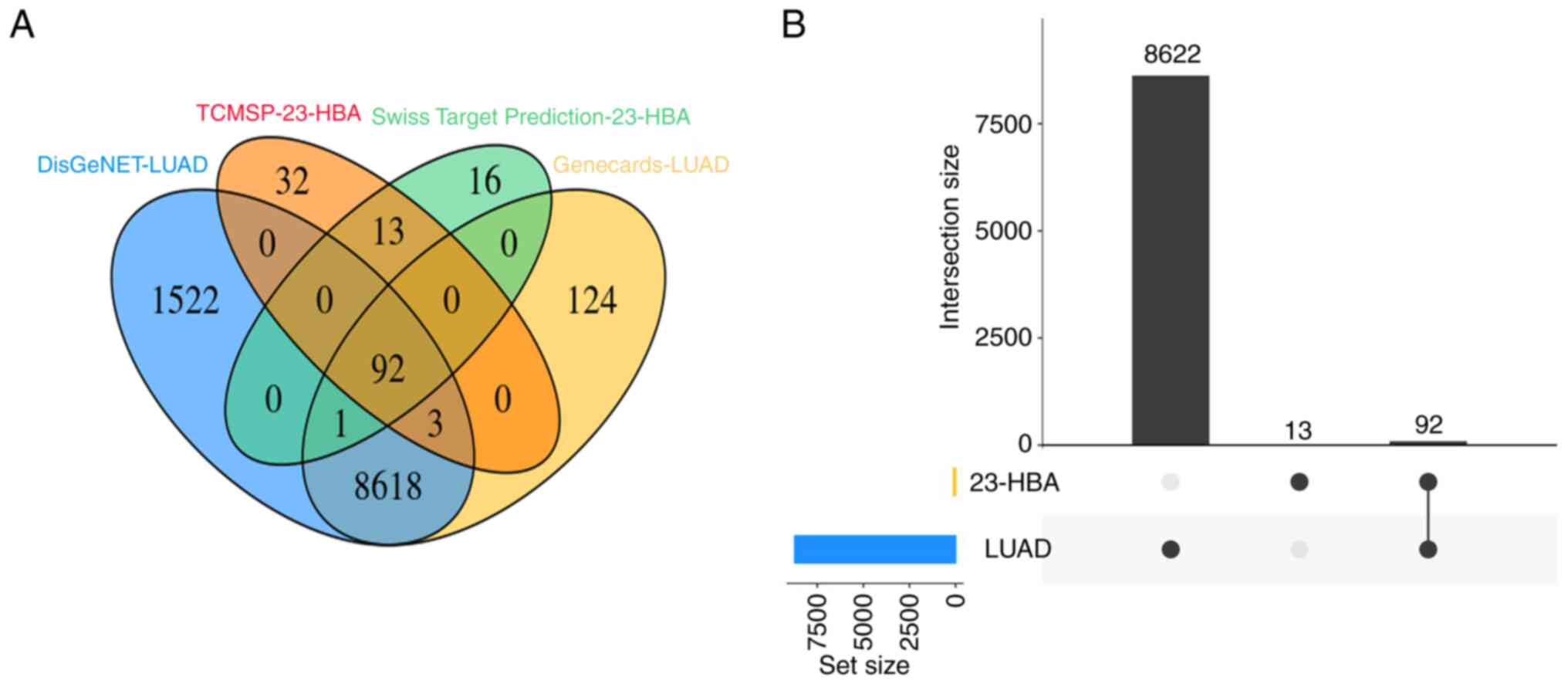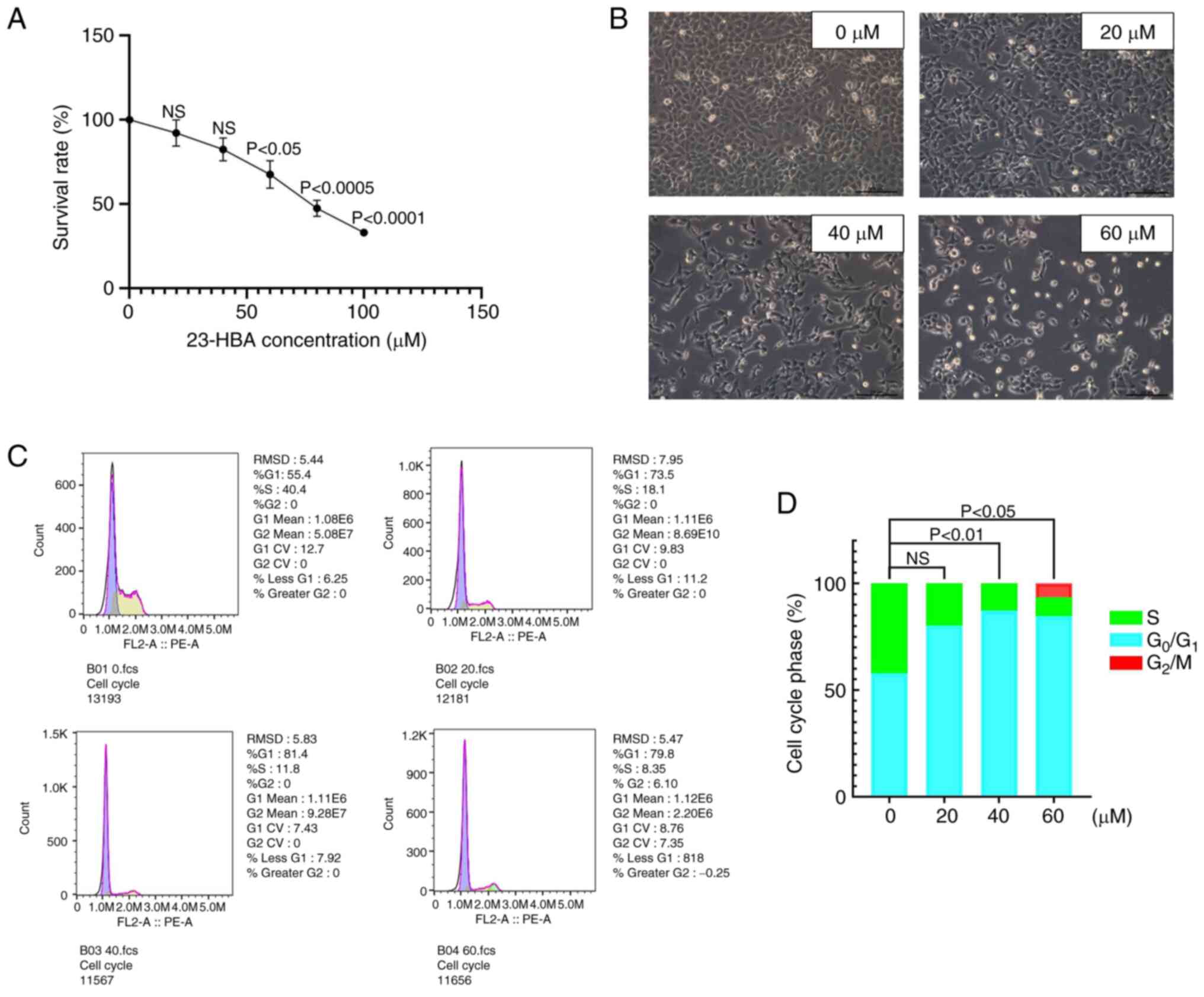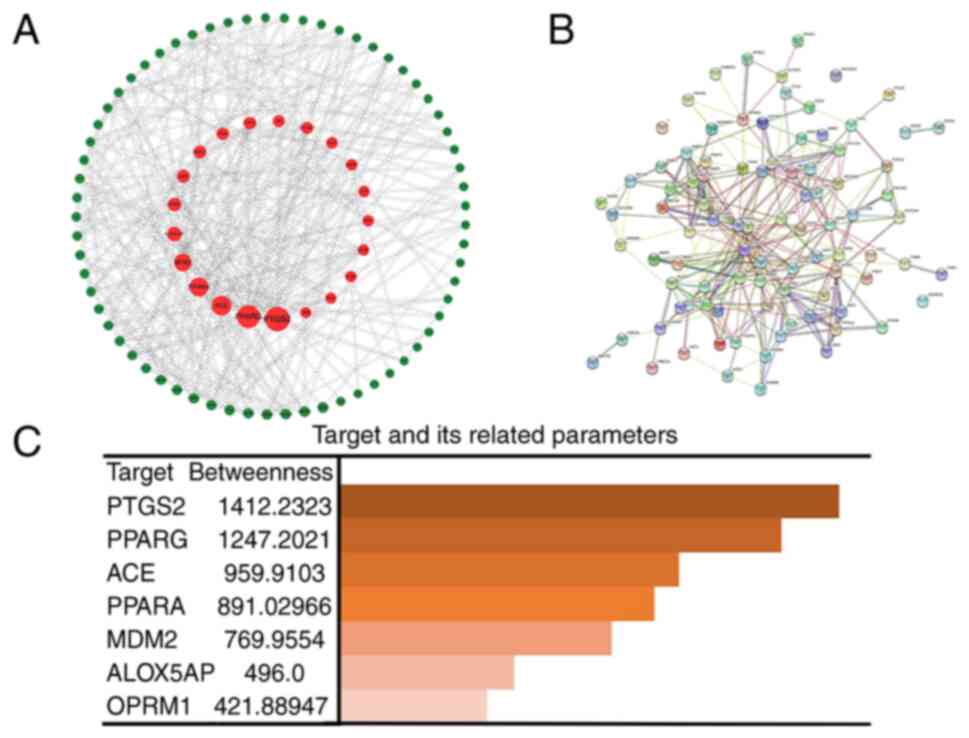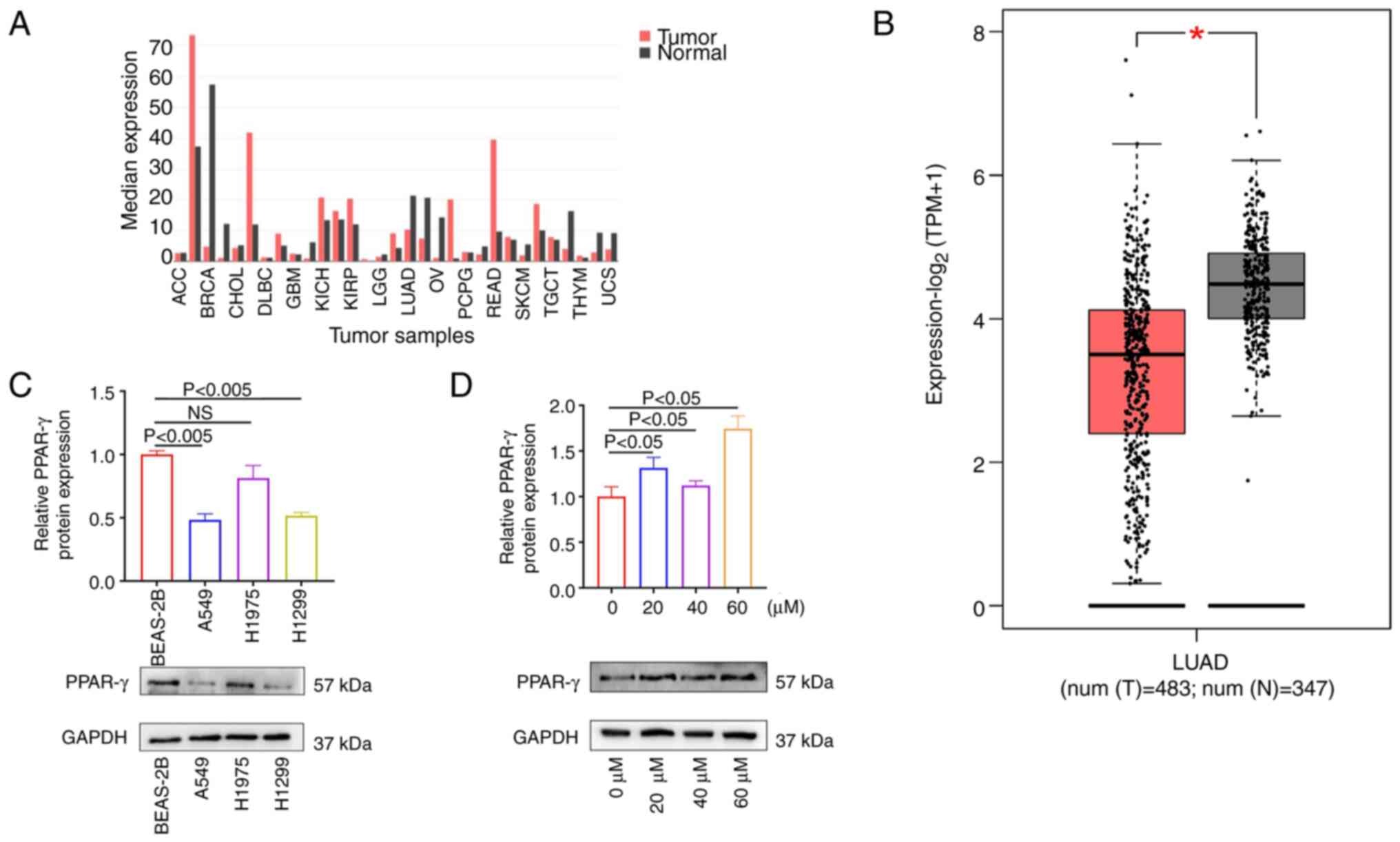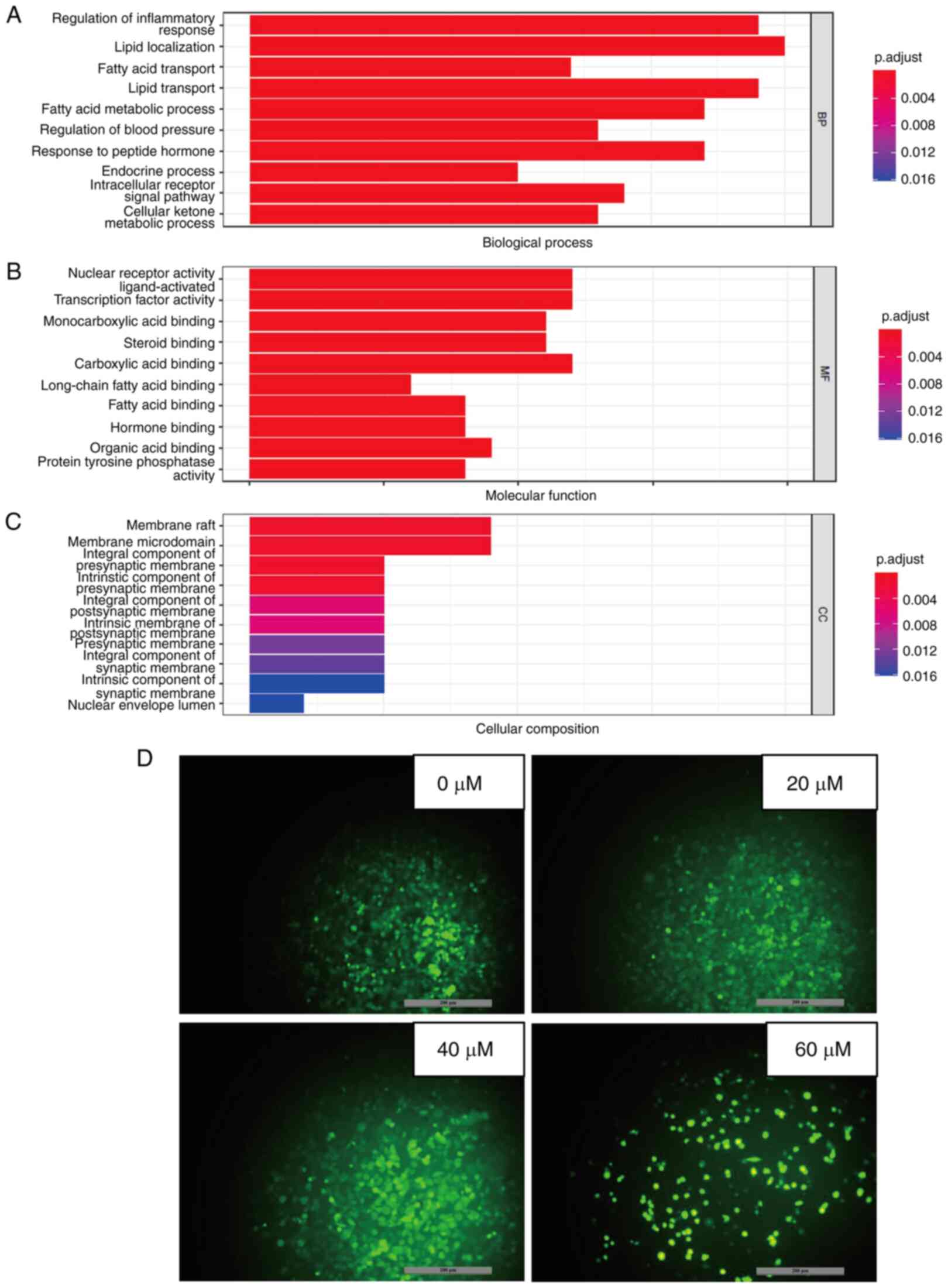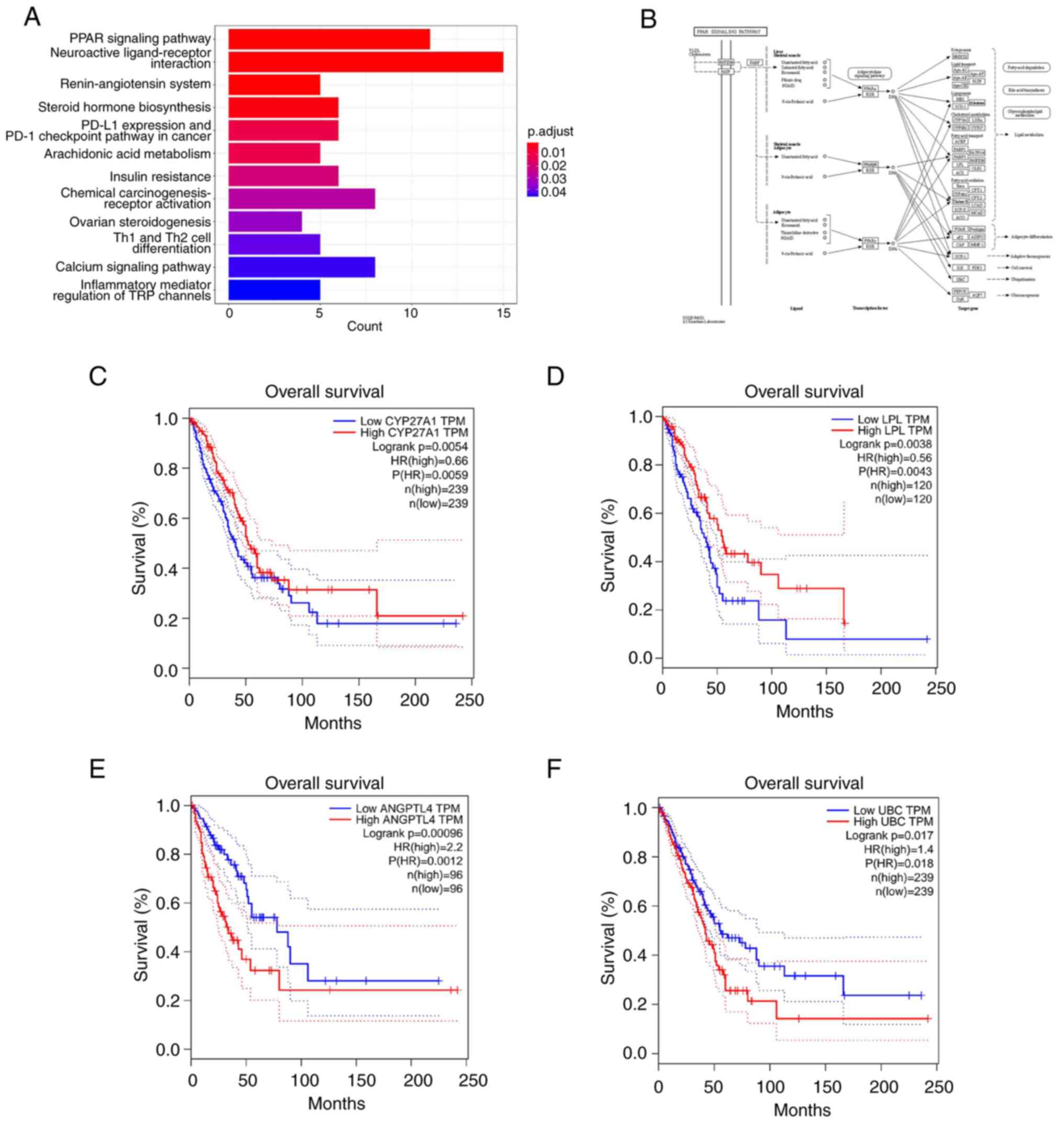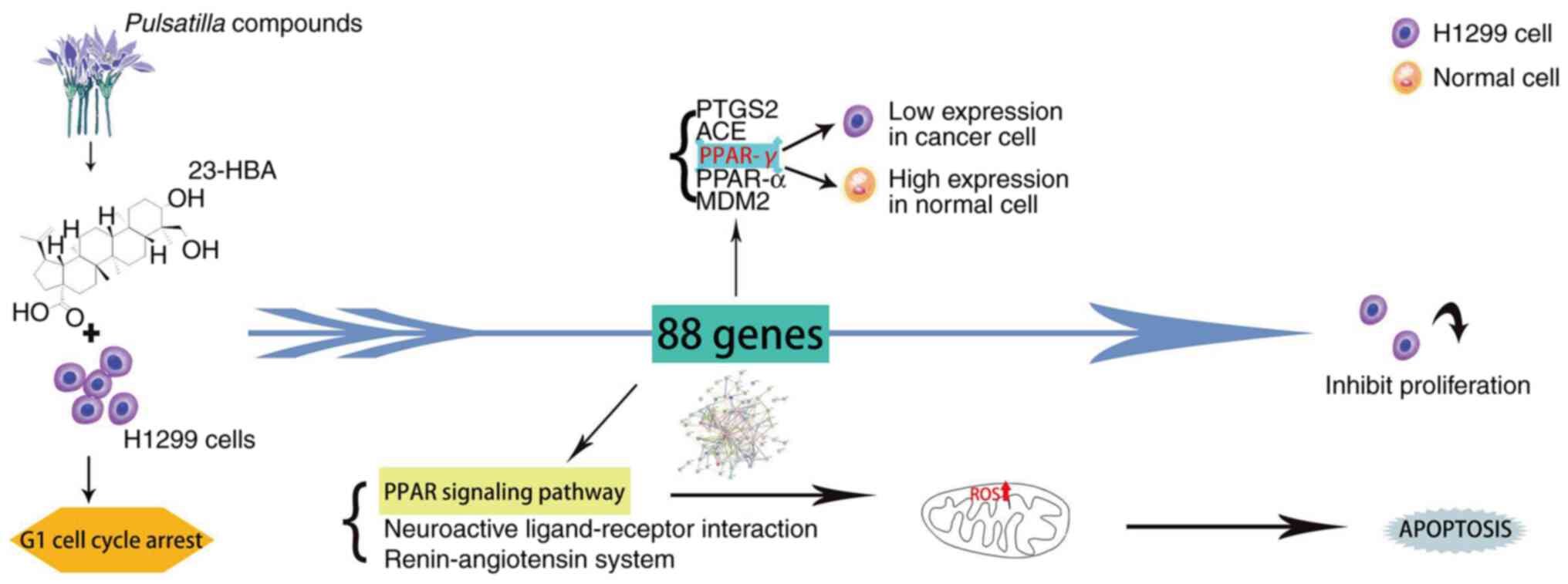|
1
|
Sung H, Ferlay J, Siegel RL, Laversanne M,
Soerjomataram I, Jemal A and Bray F: Gloal cancer statistics 2020:
GLOBOCAN estimates of incidence and mortality worldwide for 36
cancers in 185 countries. CA Cancer J Clin. 71:209–249.
2021.PubMed/NCBI View Article : Google Scholar
|
|
2
|
Shigeta K, Datta M, Hato T, Kitahara S,
Chen IX, Matsui A, Kikuchi H, Mamessier E, Aoki S, Ramjiawan RR, et
al: Dual programmed death receptor-1 and vascular endothelial
growth factor receptor-2 blockade promotes vascular normalization
and enhances antitumor immune responses in hepatocellular
carcinoma. Hepatology. 71:1247–1261. 2020.PubMed/NCBI View Article : Google Scholar
|
|
3
|
Aoki T, Kudo M, Ueshima K, Morita M,
Chishina H, Takita M, Hagiwara S, Ida H, Minami Y, Tsurusaki M and
Nishida N: Incidence of hyper progressive disease in combination
immunotherapy and anti-programmed cell death protein 1/programmed
death-ligand 1 monotherapy for unresectable hepatocellular
carcinoma. Liver Cancer. 13:56–69. 2023.PubMed/NCBI View Article : Google Scholar
|
|
4
|
Cheng X: The effect of CDKN2A gene
mutation on lung cancer and its relationship with prognosis. J Appl
Cancer. 875-878(883)2021.
|
|
5
|
Oudkerk M, Liu S, Heuvelmans MA, Walter JE
and Field JK: Lung cancer LDCT screening and mortality
reduction-evidence, pitfalls and future perspectives. Nat Rev Clin
Oncol. 18:135–151. 2021.PubMed/NCBI View Article : Google Scholar
|
|
6
|
Zhang L, Shao F, Li L, et al: CALM1 gene
expression and EGFR mutation in colorectal cancer and its clinical
significance. Gen Med Edu. 21:18–21. 2023.DOI: 10.13558/j. carol
carroll nki issn1672-3686.2023.001.005.
|
|
7
|
Brown A and Goodman Z: Hepatitis
B-associated fibrosis and fibrosis/cirrhosis regression with
nucleoside and nucleotide analogs. Expert Rev Gastroenterol
Hepatol. 6:187–198. 2012.PubMed/NCBI View
Article : Google Scholar
|
|
8
|
Clough E and Barrett T: The gene
expression omnibus database. Methods Mol Biol. 1418:93–110.
2016.PubMed/NCBI View Article : Google Scholar
|
|
9
|
Huang J, Zhang J, Zhang F, Lu S, Guo S,
Shi R, Zhai Y, Gao Y, Tao X, Jin Z, et al: Identification of a
disulfidptosis-related genes signature for prognostic implication
in lung adenocarcinoma. Comput Biol Med. 165(107402)2023.PubMed/NCBI View Article : Google Scholar
|
|
10
|
Liang Q, Gong M, Zou JH, Luo MY, Jiang LL,
Wang C, Shen NX, Zhang MC, Xu L, Lei HM, et al: A phosphoglycerate
mutase 1 allosteric inhibitor overcomes drug resistance to
EGFR-targeted therapy via disrupting IL-6/JAK2/STAT3 signaling
pathway in lung adenocarcinoma. Drug Resist Updat.
68(100957)2023.PubMed/NCBI View Article : Google Scholar
|
|
11
|
Jiang M, Yang M, Zhou YY, et al: Effects
of 23-hydroxybetulinic acid on proliferation and apoptosis of
vascular endothelial cells. Cancer Prev Res. 911–913+985. 2007.
|
|
12
|
Molina JR, Yang P, Cassivi SD, Schild SE
and Adjei AA: Non-small cell lung cancer: Epidemiology, risk
factors, treatment, and survivorship. Mayo Clin Proc. 83:584–594.
2008.PubMed/NCBI View
Article : Google Scholar
|
|
13
|
Tang Z, Kang B, Li C, Chen T and Zhang Z:
GEPIA2: An enhanced web server for large-scale expression profiling
and interactive analysis. Nucleic Acids Res. 47 (W1):W556–W560.
2019.PubMed/NCBI View Article : Google Scholar
|
|
14
|
Caligiuri G: CD31 as a therapeutic target
in atherosclerosis. Circ Res. 126:1178–1189. 2020.PubMed/NCBI View Article : Google Scholar
|
|
15
|
Liao D, Sundlov J, Zhu J, Mei H, Hu Y,
Newman DK and Newman PJ: Atomic level dissection of the platelet
endothelial cell adhesion molecule 1 (PECAM-1) homophilic binding
interface: Implications for endothelial cell barrier function.
Arterioscler Thromb Vasc Biol. 42:193–204. 2022.PubMed/NCBI View Article : Google Scholar
|
|
16
|
Hu M, Zhang H, Liu Q and Hao Q: Structural
basis for human PECAM-1-mediated trans-homophilic cell adhesion.
Sci Rep. 6(38655)2016.PubMed/NCBI View Article : Google Scholar
|
|
17
|
Winneberger J, Schöls S, Lessmann K,
Rández-Garbayo J, Bauer AT, Mohamud Yusuf A, Hermann DM, Gunzer M,
Schneider SW, Fiehler J, et al: Platelet endothelial cell adhesion
molecule-1 is a gatekeeper of neutrophil transendothelial migration
in ischemic stroke. Brain Behav Immun. 93:277–287. 2021.PubMed/NCBI View Article : Google Scholar
|
|
18
|
Zhu H, Lu L, Zhu W, Tan Y, Duan Y, Liu J,
Ye W, Zhu Z, Xu J and Xu S: Design and synthesis of NAD(P)H:
Quinone oxidoreductase (NQO1)-activated prodrugs of
23-hydroxybetulinic acid with enhanced antitumor properties. Eur J
Med Chem. 240(114575)2022.PubMed/NCBI View Article : Google Scholar
|
|
19
|
Chen SY, Tsuneyama K, Yen MH, Lee JT, Chen
JL and Huang SM: Hyperbaric oxygen suppressed tumor progression
through the improvement of tumor hypoxia and induction of tumor
apoptosis in A549-cell-transferred lung cancer. Sci Rep.
11(12033)2021.PubMed/NCBI View Article : Google Scholar
|
|
20
|
Tian D, Yu Y, Zhang L, Sun J and Jiang W:
23-Hydroxybetulinic acid reduces tumorigenesis, metastasis and
immunosuppression in a mouse model of hepatocellular carcinoma via
disruption of the MAPK signaling pathway. Anticancer Drugs.
33:815–825. 2022.PubMed/NCBI View Article : Google Scholar
|
|
21
|
Ye B and Ji ZN: 23-Hydroxybetulinic
acid-induced HL-60 cell autophagic apoptosis and its molecular
mechanism. Nat Prod Res. 26:1063–1068. 2012.PubMed/NCBI View Article : Google Scholar
|
|
22
|
Doi H, Kida T, Nishino K, Nakatsuji M,
Sakamoto S, Shimizu S, Teraoka Y, Tamura Y, Kataoka Y and Inui T:
Solubility-improved 10-O-substituted SN-38 derivatives with
antitumor activity. ChemMedChem. 12:1715–1722. 2017.PubMed/NCBI View Article : Google Scholar
|
|
23
|
Xiang S: Effect and mechanism of
23-hydroxybetulcholic acid on ulcerative colitis induced by DSS.
Zunyi Medical Coll, 2022. DOI: 10.27680 /, dc nki. Gzyyc.
2022.000496.
|
|
24
|
Wang C, Yu Q, Song T, Wang Z, Song L, Yang
Y, Shao J, Li J, Ni Y, Chao N, et al: The heterogeneous immune
landscape between lung adenocarcinoma and squamous carcinoma
revealed by single-cell RNA sequencing. Signal Transduct Target
Ther. 7(289)2022.PubMed/NCBI View Article : Google Scholar
|
|
25
|
Kobayashi Y and Mitsudomi T: Not all
epidermal growth factor receptor mutations in lung cancer are
created equal: Perspectives for individualized treatment strategy.
Cancer Sci. 107:1179–1186. 2016.PubMed/NCBI View Article : Google Scholar
|
|
26
|
Li Q, Zhang H, Yan X, Zhao Z, Qiu J, Hu L,
Jiang S, Kong Q, Sun J and Li L: Up-regulation of PPAR-γ involved
in the therapeutic effect of icariin on cigarette smoke-induced
inflammation. Pulm Pharmacol Ther. 79(102197)2023.PubMed/NCBI View Article : Google Scholar
|
|
27
|
Chen JJ, Patel A, Sodani K, Xiao ZJ,
Tiwari AK, Zhang DM, Li YJ, Yang DH, Ye WC, Chen SD and Chen ZS:
BBA, a synthetic derivative of 23-hydroxybutulinic acid, reverses
multidrug resistance by inhibiting the efflux activity of MRP7
(ABCC10). PLoS One. 8(e74573)2013.PubMed/NCBI View Article : Google Scholar
|
|
28
|
Chen H, Bai L, Shi Y, Zhang X, Wang X,
Wang Y, Hu J and Zhou P: Investigation of the molecular mechanism
underlying the therapeutic effect of perilla frutescens L.
Essential oil on acute lung injury using gas chromatography mass
spectrometry and network pharmacology. Comb Chem High Throughput
Screen: Oct 10, 2023 (Epub ahead of print).
|
|
29
|
Huang Z, Gao Y and Hou D: Interleukin-22
enhances chemoresistance of lung adenocarcinoma cells to
paclitaxel. Hum Cell. 33:850–858. 2020.PubMed/NCBI View Article : Google Scholar
|
|
30
|
Feng Z, Chen Y, Cai C, Tan J, Liu P, Chen
Y, Shen H, Zeng S and Han Y: Pan-cancer and single-cell analysis
reveals CENPL as a cancer prognosis and immune infiltration-related
biomarker. Front Immunol. 13(916594)2022.PubMed/NCBI View Article : Google Scholar
|
|
31
|
Cao J, Sun S, Min R, Li R, Fan X, Han Y,
Feng Z and Li N: Prognostic significance of CCNB2 expression in
triple-negative breast cancer. Cancer Manag Res. 13:9477–9487.
2021.PubMed/NCBI View Article : Google Scholar
|
|
32
|
Zhang W, Tian W, Wang Y, Jin X, Guo H,
Wang Y, Tang Y and Yao X: Explore the mechanism and substance basis
of Mahuang FuziXixin Decoction for the treatment of lung cancer
based on network pharmacology and molecular docking. Comput Biol
Med. 151(106293)2022.PubMed/NCBI View Article : Google Scholar
|
|
33
|
Du Y, Lv Z, Sun D, Li Y, Sun L and Zhou J:
Physcion 8-O-β-glucopyranoside exerts anti-tumor activity against
non-small cell lung cancer by targeting PPARγ. Anat Rec (Hoboken).
302:785–793. 2019.PubMed/NCBI View Article : Google Scholar
|
|
34
|
Kim S and Bae S: In vitro and in vivo
human body odor analysis method using GO:PANI/ZNRs/ZIF-8 adsorbent
followed by GC/MS. Molecules. 27(4795)2022.PubMed/NCBI View Article : Google Scholar
|
|
35
|
Lei Y: Anti-liver cancer activity
evaluation and mechanism of 23-hydroxybetulinic acid derivative
B4G2. Jinan University, 2017.
|
|
36
|
Ma J, Cai X, Kang L, Chen S and Liu H:
Identification of novel biomarkers and candidate small-molecule
drugs in cutaneous melanoma by comprehensive gene microarrays
analysis. J Cancer. 12:1307–1317. 2021.PubMed/NCBI View Article : Google Scholar
|
|
37
|
Liu L, Zhou S, Yang Z, et al: Study on
population distribution of ACE gene polymorphism and its high
expression in essential hypertension. J Pract Lab Phys. 10:132–134.
2018.
|
|
38
|
Ding H and Hu M: Research progress of
anti-tumor small molecule inhibitors targeting p53-MDM2. Adv Clin
Med. 13:13474–13483. 2023.(In Chinese).
|
|
39
|
Xiong Y and Li B: The cause of deletion of
P53 protein in H1299 cells. Macau Med J. 4:8–9. 2004.
|
|
40
|
Dourado KMC, Baik J, Oliveira VKP,
Beltrame M, Yamamoto A, Theuer CP, Figueiredo CAV, Verneris MR and
Perlingeiro RCR: Endoglin: A novel target for therapeutic
intervention in acute leukemias revealed in xenograft mouse models.
Blood. 129:2526–2536. 2017.PubMed/NCBI View Article : Google Scholar
|
|
41
|
liu xiao mei, first hai-li wang, etc:
Research progress on the role of PPAR-γ/AP-1 signaling pathway in
related diseases. J Yichun Univ, 21,43: 12-16.
|
|
42
|
Moloney JN and Cotter TG: ROS signalling
in the biology of cancer. Semin Cell Dev Biol. 80:50–64.
2018.PubMed/NCBI View Article : Google Scholar
|
|
43
|
Cao XJ, Zhang MJ, Zhang LL, Yu K, Xiang Y,
Ding X, Fan J, Li JC and Wang QS: TLR4 mediates high-fat diet
induced physiological changes in mice via attenuating PPARγ/ABCG1
signaling pathway. Biochem Biophys Res Commun. 503:1356–1363.
2018.PubMed/NCBI View Article : Google Scholar
|
|
44
|
Alqahtani S and Mahmoud AM:
Gamma-Glutamylcysteine Ethyl Ester Protects against
Cyclophosphamide-Induced Liver Injury and Hematologic Alterations
via Upregulation of PPAR and Attenuation of Oxidative Stress,
Inflammation, and Apoptosis. Oxidative Medicine and Cellular
Longevity, 2016.
|
|
45
|
Laganà AS, Vitale SG, Nigro A, Sofo V,
Salmeri FM, Rossetti P, Rapisarda AM, La Vignera S, Condorelli RA,
Rizzo G and Buscema M: Pleiotropic actions of peroxisome
proliferator-activated receptors (PPARs) in dysregulated metabolic
homeostasis, inflammation and cancer: Current evidence and future
perspectives. Int J Mol Sci. 17(999)2016.PubMed/NCBI View Article : Google Scholar
|
|
46
|
Jiang MJ, Yang M, Zhou YY, Zhang RJ, Cao
GX, Cai GM and Wang GJ: In vitro inhibitory effect of 23-HBA on
angiogenesis. Xi Bao Yu Fen Zi Mian Yi Xue Za Zhi. 22:88–91.
2006.PubMed/NCBI(In Chinese).
|
|
47
|
Zhang DM, Shu C, Chen JJ, Sodani K, Wang
J, Bhatnagar J, Lan P, Ruan ZX, Xiao ZJ, Ambudkar SV, et al: BBA, a
derivative of 23-hydroxybetulinic acid, potently reverses
ABCB1-mediated drug resistance in vitro and in vivo. Mol Pharm.
9:3147–3159. 2012.PubMed/NCBI View Article : Google Scholar
|
|
48
|
Nahlé N: PPAR trilogy from metabolism to
cancer. Curr Opin Clin Nutr Metab Care. 7:397–402. 2004.PubMed/NCBI View Article : Google Scholar
|
|
49
|
Elix CC, Salgia MM, Otto-Duessel M,
Copeland BT, Yoo C, Lee M, Tew BY, Ann D, Pal SK and Jones JO:
Peroxisome proliferator-activated receptor gamma controls prostate
cancer cell growth through AR-dependent and independent mechanisms.
Prostate. 80:162–172. 2020.PubMed/NCBI View Article : Google Scholar
|
|
50
|
Zhang J and Bai WP: C1q/tumor necrosis
factor related protein 6 (CTRP6) regulates the phenotypes of high
glucose-induced gestational trophoblast cells via peroxisome
proliferator-activated receptor gamma (PPARγ) signaling.
Bioengineered. 13:206–216. 2022.PubMed/NCBI View Article : Google Scholar
|
|
51
|
Zhou P: Preliminary study on the function
of PPARG gene in human skin squamous cell carcinoma Colol6 cells.
Peking Union Medical College, 2019.
|
|
52
|
Zhan L, Zhang H, Zhang Q, Woods CG, Chen
Y, Xue P, Dong J, Tokar EJ, Xu Y, Hou Y, et al: Regulatory role of
KEAP1 and NRF2 in PPARγ expression and chemoresistance in human
non-small-cell lung carcinoma cells. Free Radic Biol Med.
53:758–768. 2012.PubMed/NCBI View Article : Google Scholar
|
|
53
|
Li H, Sorenson AL, Poczobutt J, Amin J,
Joyal T, Sullivan T, Crossno JT Jr, Weiser-Evans MC and Nemenoff
RA: Activation of PPARgamma in myeloid cells promotes lung cancer
progression and metastasis. PLoS One. 6(e28133)2011.PubMed/NCBI View Article : Google Scholar
|
|
54
|
Liu S, Zhang H, Li Y, Zhang Y, Bian Y,
Zeng Y, Yao X, Wan J, Chen X, Li J, et al: S100A4 enhances protumor
macrophage polarization by control of PPAR-γ-dependent induction of
fatty acid oxidation. J Immunother Cancer.
9(e002548)2021.PubMed/NCBI View Article : Google Scholar
|
|
55
|
Wagner N and Wagner KD: Pharmacological
utility of PPAR modulation for angiogenesis in cardiovascular
disease. Int J Mol Sci. 24(2345)2023.PubMed/NCBI View Article : Google Scholar
|
|
56
|
Fang C, Liu Y, Chen L, Luo Y, Cui Y, Zhang
N, Liu P, Zhou M and Xie Y: α-Hederin inhibits the growth of lung
cancer A549 cells in vitro and in vivo by decreasing SIRT6
dependent glycolysis. Pharm Biol. 59:11–20. 2021.PubMed/NCBI View Article : Google Scholar
|
|
57
|
Reka AK, Goswami MT, Krishnapuram R,
Standiford TJ and Keshamouni VG: Molecular cross-regulation between
PPAR-γ and other signaling pathways: Implications for lung cancer
therapy. Lung Cancer. 72:154–159. 2011.PubMed/NCBI View Article : Google Scholar
|
|
58
|
Łaska G, Sieniawska E, Maciejewska-Turska
M, Świątek Ł, Pasco DS and Balachandran P: Pulsatilla vulgaris
inhibits cancer proliferation in signaling pathways of 12 reporter
genes. Int J Mol Sci. 24(1139)2023.PubMed/NCBI View Article : Google Scholar
|
|
59
|
Cheung EC and Vousden KH: The role of ROS
in tumour development and progression. Nat Rev Cancer. 22:280–297.
2022.PubMed/NCBI View Article : Google Scholar
|
|
60
|
Zhang S, Wang C, Tang S, Deng S, Zhou Y,
Dai C, Yang X and Xiao X: Inhibition of autophagy promotes
caspase-mediated apoptosis by tunicamycin in HepG2 cells. Toxicol
Mech Methods. 24:654–665. 2014.PubMed/NCBI View Article : Google Scholar
|
|
61
|
Yao N, Li YJ, Lei YH, Hu N, Chen WM, Yao
Z, Yu M, Liu JS, Ye WC and Zhang DM: A piperazidine derivative of
23-hydroxy betulinic acid induces a mitochondria-derived ROS burst
to trigger apoptotic cell death in hepatocellular carcinoma cells.
J Exp Clin Cancer Res. 35(192)2016.PubMed/NCBI View Article : Google Scholar
|
|
62
|
Liu M, Zhao X, Xiao L, Liu G, Liu H, Wang
X, Feng X and Lin X: Cytotoxicity of the compounds isolated from
Pulsatilla chinensis saponins and apoptosis induced by
23-hydroxybetulinic acid. Pharm Biol. 53:1–9. 2015.PubMed/NCBI View Article : Google Scholar
|
|
63
|
Yu C, Chen F, Jiang J, Zhang H and Zhou M:
Screening key genes and signaling pathways in colorectal cancer by
integrated bioinformatics analysis. Mol Med Rep. 20:1259–1269.
2019.PubMed/NCBI View Article : Google Scholar
|
|
64
|
Zhang Z, Zhang X, Meng L, Gong M, Li J,
Shi W, Qiu J, Yang Y, Zhao J, Suo Y, et al: Pioglitazone inhibits
diabetes-induced atrial mitochondrial oxidative stress and improves
mitochondrial biogenesis, dynamics, and function through the
PPAR-γ/PGC-1α signaling pathway. Front Pharmacol.
12(658362)2021.PubMed/NCBI View Article : Google Scholar
|















